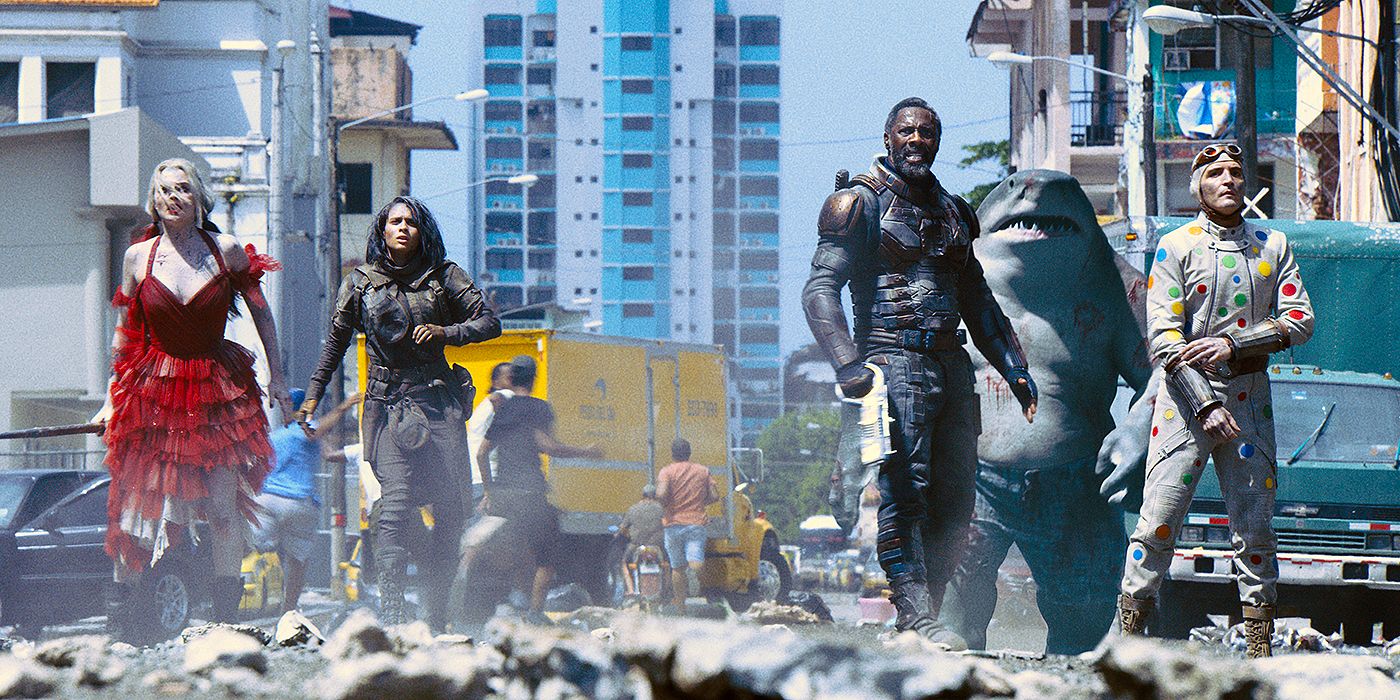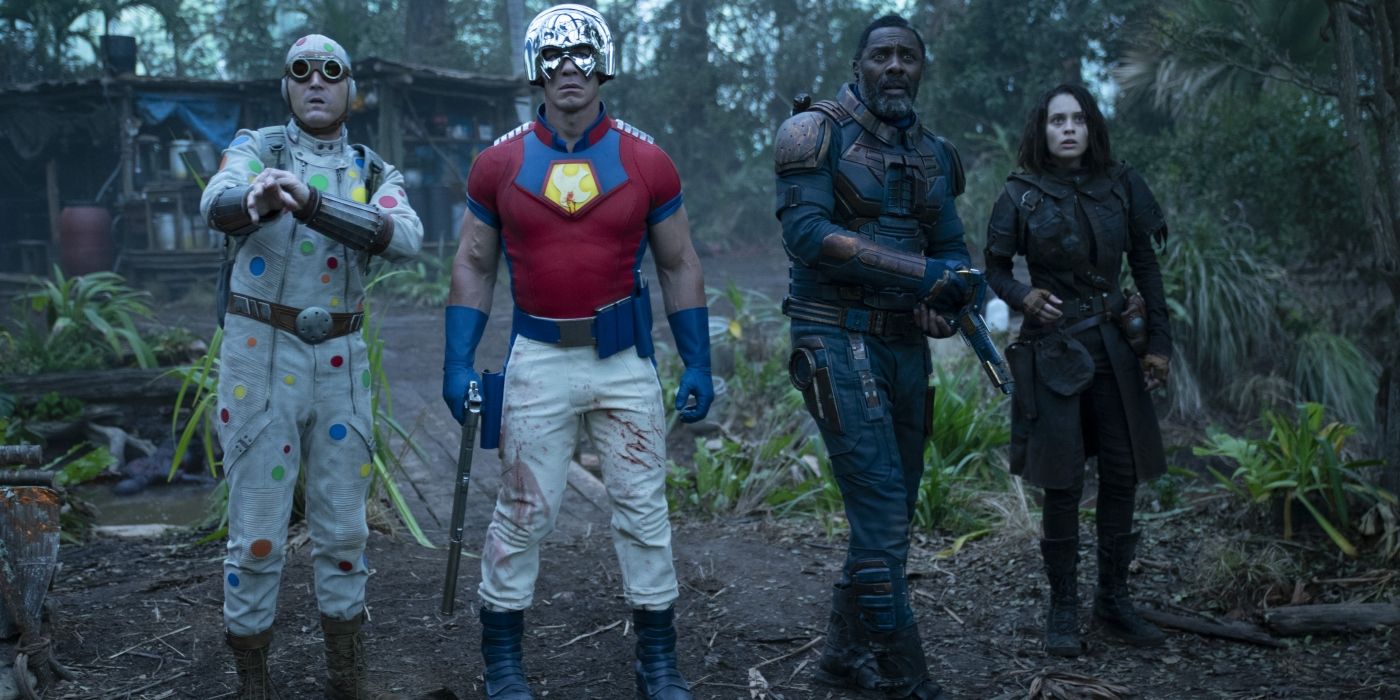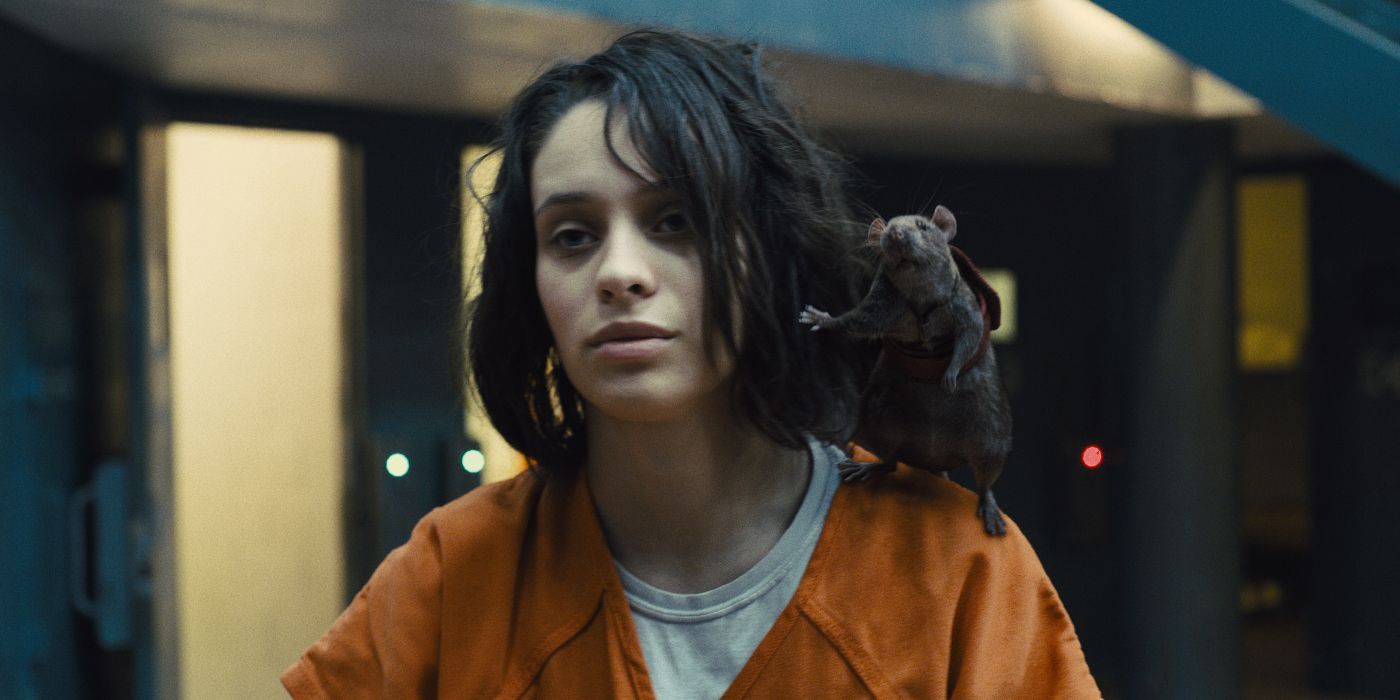
WARNING: The following contains spoilers for The Suicide Squad, now in theaters and streaming on HBO Max.
James Gunn's The Suicide Squad is, at its heart, a character-driven film. And the fact that the movie is so focused on its individual characters and how they interact together as a team makes it more cohesive and enjoyable than the original Suicide Squad. In comparison to other superhero films, namely its David Ayer-directed predecessor, it is not dominated by big DC villains; it’s human and down-to-earth because of its low stakes. It can stand on its own, independent of any other DC film, because of its centralized plot and character-driven story.
The Suicide Squad follows the titular all-villain squad assembled by Amanda Waller (Viola Davis) as they assist in the liberation of the tiny island nation of Corto Maltese. It sees the return of Margot Robbie as Harley Quinn and Joel Kinnaman as Rick Flag, as well as introducing a whole new cast of characters: Idris Elba as Bloodsport, John Cena as Peacemaker, David Dastmalchian as Polka-Dot Man, Daniela Melchior as Ratcatcher 2 and Sylvester Stallone as King Shark. The characters chosen make the movie work because each one is so weird or unassuming by themselves. Despite the massive cast full of big names and new faces alike, each character feels alive and unique. Only a film with this many zany, out-of-the-box characters could succeed with such a low-stakes, minimal plot.

Instead of tackling a huge villain like Enchantress, who has mystical energy manipulation and inter-dimensional abilities, The Suicide Squad deals with a threat more close to home in both scope and story: a South American junta in the midst of a power vacuum. The film rarely leaves the island, only cutting to Waller and her team working at their headquarters in Belle Reve. Containing the majority of the action to Corto Maltese keeps the story airtight and prevents it from becoming too complex.
Starro, the alien who has been living in the scientific base of Jotunheim, is contained to the island as well. Additionally, the mini-Starros only infect the people living on Corto Maltese. While fighting Starro is still a life-or-death situation, these aren’t the huge, global or intergalactic stakes seen in films like Justice League or Avengers: Endgame. The lower stakes work because they allow the film to focus chiefly on its characters and develop the team dynamics.
With only a handful of actors returning from Suicide Squad, Gunn’s movie manages to introduce and explore the new team members with ease. Bloodsport and Peacemaker are ideal foils, constantly arguing with each other over who is the better marksman and leader. Ratcatcher 2 is able to connect with King Shark in a way the other team members can’t, making them unlikely friends. Bloodsport and Ratcatcher 2’s father-daughter dynamic, too, is a refreshing glimmer of lightness in an otherwise gory and dark film. Polka-Dot Man and his powers are also delightfully weird in every scene, being the most awkward one on the team. He's matched only by Ratcatcher 2 and her friendship with her pet rat Sebastian.

As for returning members, Harley is able to define herself independently of the Joker, continuing her character arc from Birds of Prey. The straight-laced Flag also gets his own hero moment, inspiring the team to fight together at the end of the film and go off-assignment. Even the characters that die within minutes of their introduction make a huge impact and set up the film's future shock-value moments. The Suicide Squad is everything a great superhero team-up film should be, and shows what a solo hero film could be as well. Gunn is much more concerned with how audiences respond to the characters than the impressiveness of a high-stakes, intergalactic saga.
Moreover, the plot seems more like something that the Suicide Squad should tackle. Responding to an interdimensional being sounds like a threat that's far more up the Justice League’s alley. But sending an elite group of assassins and villains to steal data from an authoritarian regime and possibly foment political dissent in the process? Much more the Suicide Squad’s speed. It’s low-stakes compared to the likes of Enchantress and Steppenwolf, and exactly the kind of mission the US government would send a suicide squad on.
Gunn succeeds with The Suicide Squad because he keeps the plot lowkey, the characters larger-than-life and the action contained to one location. Instead of veering into global or interdimensional consequences, Gunn sends his characters on a mission much more suited to their function and skill set. This allows the characters and their interactions as a team to drive the story, rather than contributing to the larger story of a franchise. It’s a low-stakes standalone, and that’s what makes it so original and refreshing in the world of interconnected, huge-stakes sagas.
The Suicide Squad is currently in theaters and available to stream on HBO Max.
0 Comments